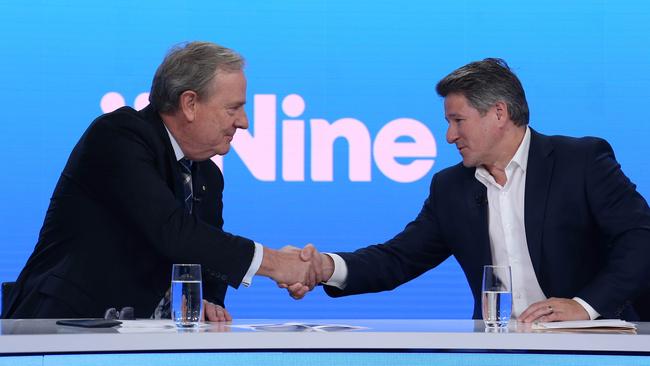
The future is visual and digital, driven by subscription revenues.
Sneesby’s success in founding streaming service Stan — a business now worth more than $1bn, with more than 2.3 million subscribers (second to Netflix’s 5.4 million in the Australian market) — seven years ago has propelled him to the top of the company that owns more traditional media in the Nine free-to-air television network and former Fairfax Media newspaper titles.
The driving force behind Stan from its inception in 2014, Sneesby shuttled back and forth between Sydney and Los Angeles to negotiate content deals with Hollywood studios for programming such as Breaking Bad.
Launched in January 2015 as a joint venture between Nine and Fairfax (each side putting in $50m), Stan is now a key part of Nine’s $5bn capitalisation.
The division has just reported earnings before interest and tax of $36.5m for the half year to the end of December (up 161 per cent on the half year to December 2019) on revenue of $149m (up 28 per cent).
In less than a decade it has contributed earnings of just over half the $68m generated by Nine’s publishing interests, which includes The Sydney Morning Herald and The Age.
While Stan’s earnings are still dwarfed by the $207m in earnings before interest and tax of Nine’s traditional broadcast interests (on revenues of $1.16bn), Nine chair Peter Costello made it clear in his comments that he saw subscription streaming services as a key part of the group’s future.
Hailing from Jervis Bay on the NSW south coast, Sneesby completed a bachelor of engineering, computer science and telecommunications at the University of Wollongong before working in a civilian role for the Australian Defence Force and then moving into management consulting.
After completing an MBA at the Macquarie University Graduate School of Management, he joined telco Optus.
He joined Nine in 2007 as director of strategy and business development of Ninemsn, before moving to Dubai to work on an internet television venture, and back to Sydney in 2012 to work for Nine on the establishment of group buying company Cudo.
His background has been on the technical side of media delivery (Costello described his background as “engineering”), on the cutting edge of new media ventures rather than the traditional journalism or TV career paths.
With his down-to-earth, open-neck style and technical media background, Sneesby is a long way from the old days of former Nine TV executive the late Sam Chisholm, whose success was driven by his ability to manage and marketing high-profile TV stars.
Or even the knockabout rugby league-loving former Nine chief executive David Gyngell, the son of long-time TV executive Bruce Gyngell.
When it came to the press conference to announce his appointment on Wednesday, there was little mention of Nine’s traditional print business, which also includes The Australian Financial Review.
These days print journalism ranks as one of the varied forms of “content” produced or sold by the group.
While Costello continued to stress the Nine board was not split between directors supporting the traditional print business and the television side, Sneesby’s appointment is very much a sign that the TV side of the business is dominant — and seen as the future of the media conglomerate.
The advent of COVID-19, with millions of people around the world spending much more time at home, saw the acceleration of the trend towards streaming.
Locked down in their homes, stuck on their couches, viewers have opted for addictive streaming series from Netflix, Stan and Binge over free-to-air television, where viewers pay for nothing but have their programming interrupted by ads.
Costello said Sneesby’s appointment shows the importance of the delivery platform of media as much as the content itself.
One could almost hear the ghost of Marshall McLuhan, who argued that “the medium is the message”.
Sneesby’s very success is a testament to his role in helping to pioneer subscription-based streaming in Australia. Last year Stan reported its first full-year profit. And last year he negotiated a big programming deal with US studio giant NBC Universal, and announced plans to step up its original produced content from five shows a year to 30 a year.
This was followed by this year’s announcement of Stan Sport.
Sitting on a TV set in an open-neck shirt, Sneesby was careful in his comments on Wednesday.
Sneesby made an aggressive push to sign up rugby union late last year at a time when the sport was in need of revenue, signalling that he saw sport as playing a role in the future for Stan.
Costello made it clear “digital distribution and the subscription business is an important part of our growth strategy”.
Sneesby’s appointment will be watched with interest: a leading media executive coming from a non-traditional media background in many ways, but with cutting-edge experience in the business model of the future: digital subscriptions.





The appointment of Stan founder and chief executive Mike Sneesby to run Nine Entertainment is a sign of the times for the media industry.